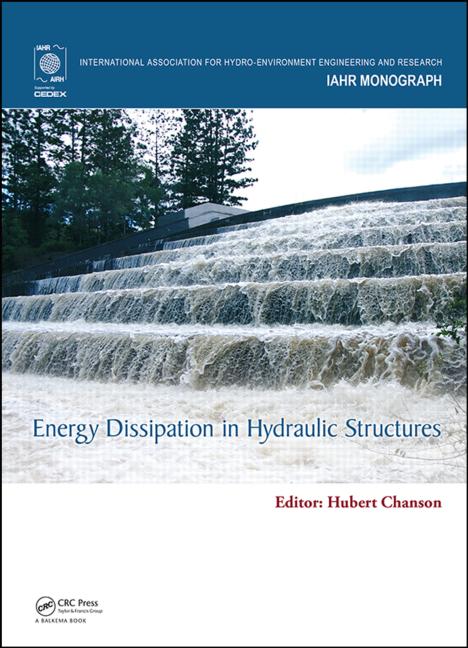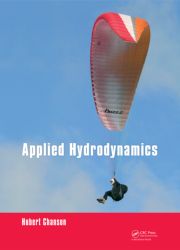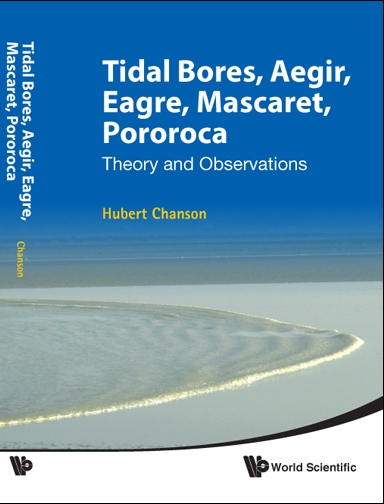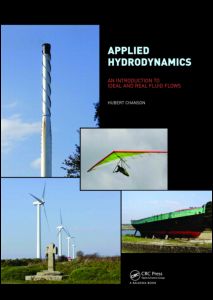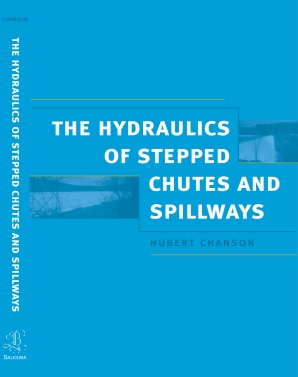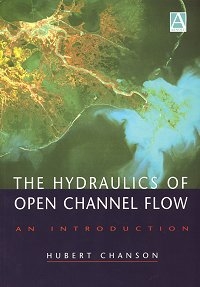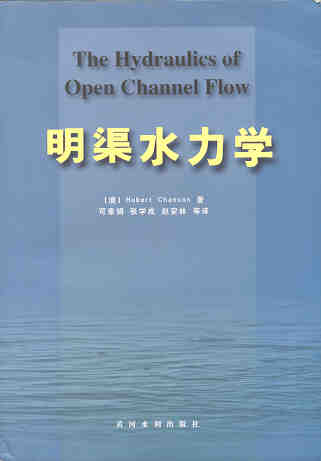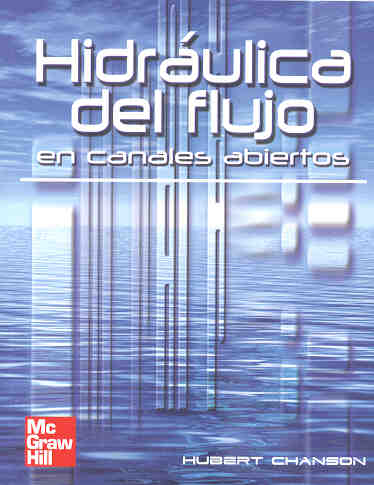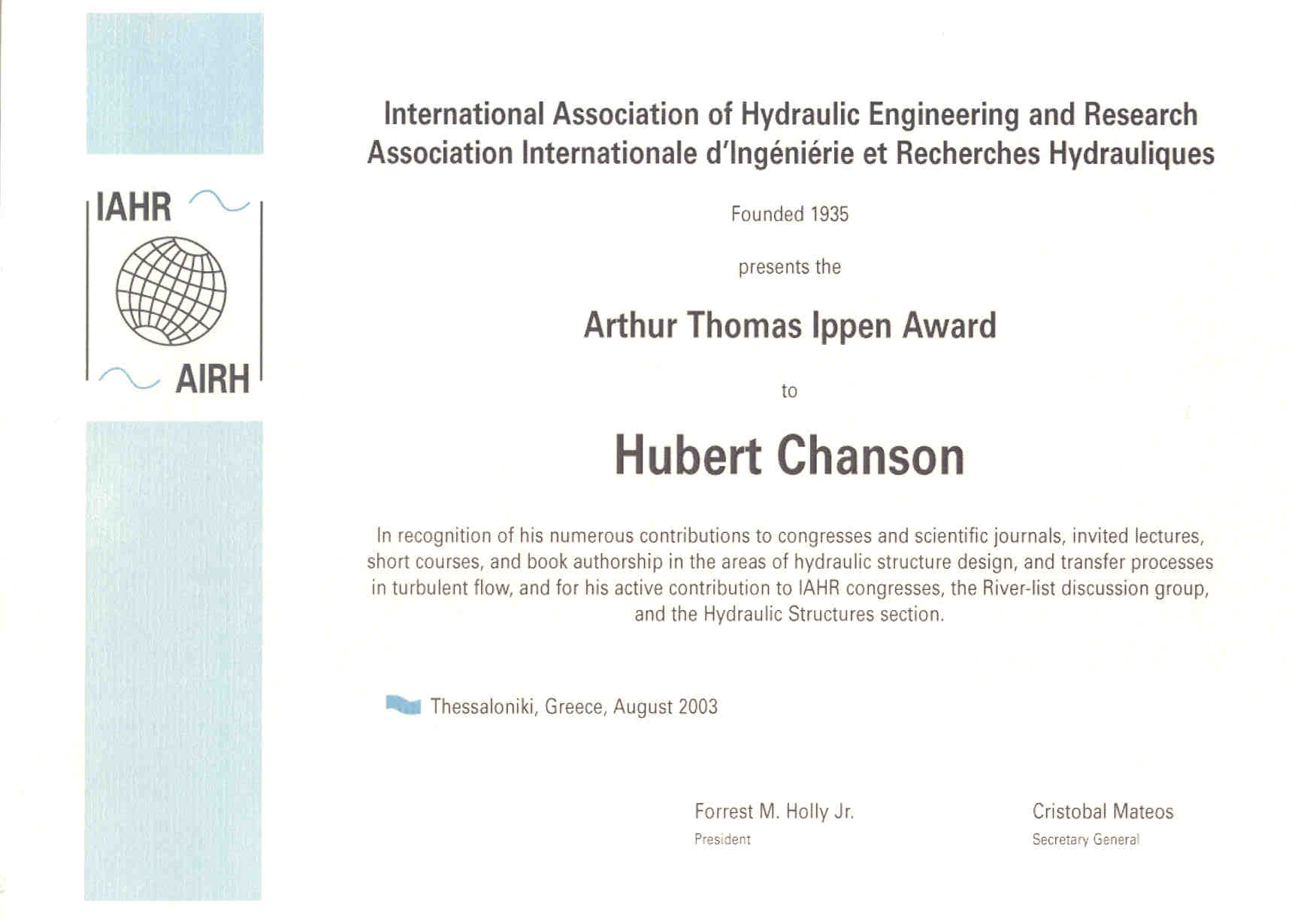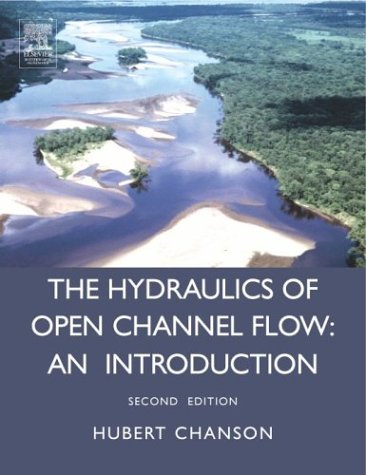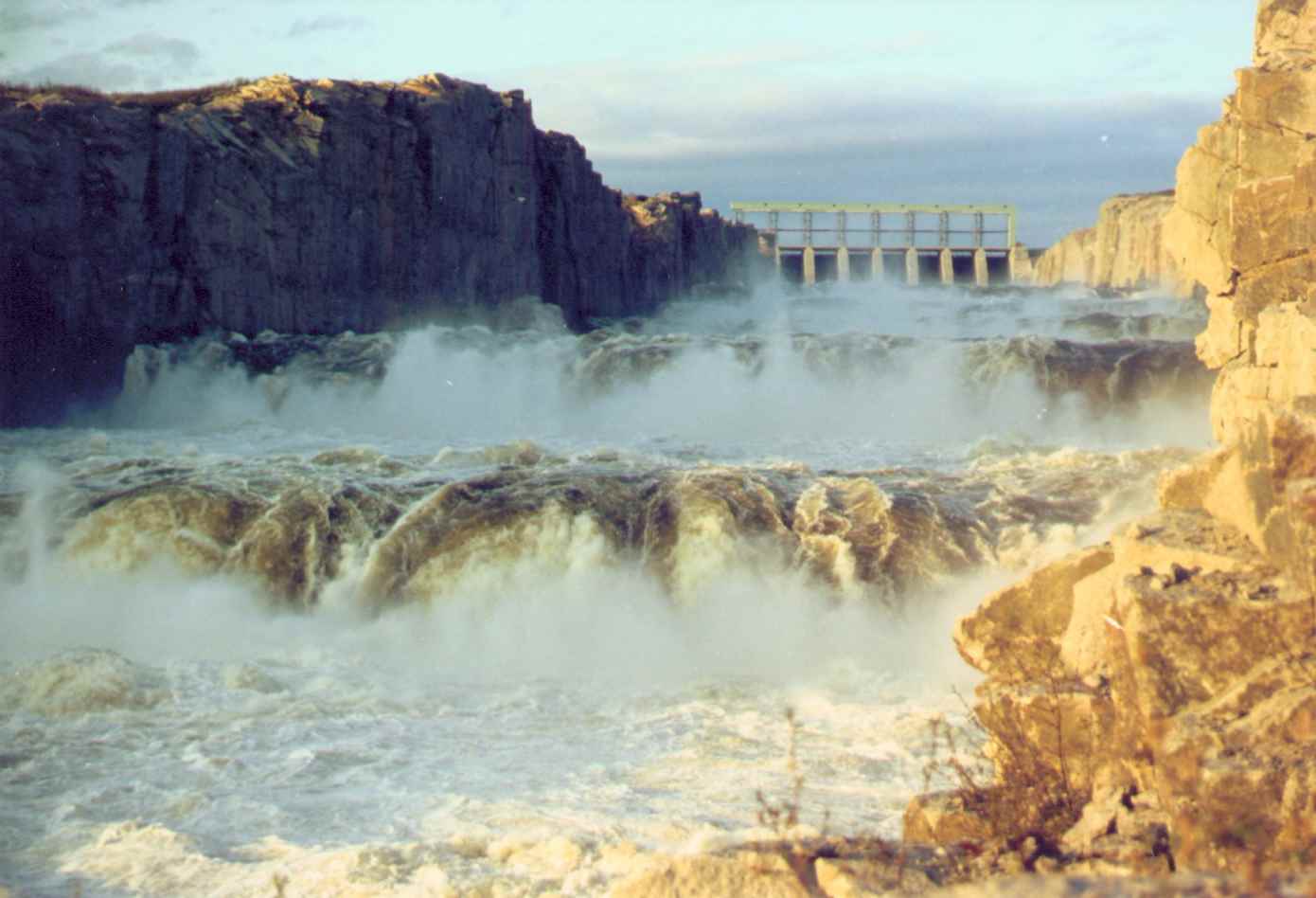
Postgraduate Research projects
Photographs in Hydraulic Engineering
Technical Webpages
Research Papers in Hydraulic Engineering 
Postgraduate Research projects
Photographs in Hydraulic Engineering
Technical Webpages
Major
Research Topics
Open Channel Flow and Hydraulic
Structures
Industrial Two-Phase Flows
Estuarine Processes
Aeration Technology and Water
Quality Modelling
Environmental Management and
Sediment Transport
Engineering History and Heritage
Research
collaborations
Six
most significant publications
ORCID: {http://orcid.org/0000-0002-2016-9650}
ResearcherID: {http://www.researcherid.com/rid/A-1194-2008}
Scopus Author ID: 7004495961
Google Scholar citations of Hubert CHANSON's works: {http://scholar.google.com.au/citations?user=3Mx-6g0AAAAJ&hl=en}
Video movies on YouTube
Physical Modelling of Air Bubble Entrainment in Vertical Planar Plunging
Jets - {https://youtu.be/GcAiBD4LpwM}
Stepped Spillway Research - {https://youtu.be/j_AsUXD4D3M}
Tidal Bore Research at the University of Queensland - {https://youtu.be/q1ieo7fQ6X8}
Fish-friendly waterways and culverts - Integration of hydrodynamics and
fish turbulence interplay & interaction - {https://youtu.be/GGWTWDOmoSQ}
Open channel flows are encountered in a wide range of applications from large rivers to roof gutters including irrigation channels. New research investigations include river turbulence, fluvial hydraulics, hydraulic jump flows, undular flows, weir overflow, stepped cascades, dropshafts, energy dissipators and supercritical flows. Applications to hydraulic structures cover high-head spillways, stepped chutes, rubber dams, stilling basins and water quality prediction (e.g. CHANSON 1995, Pergamon; CHANSON 1999, 2004, CHANSON 2004).
More about Rubber dams ... Spillway aeration devices ... Stepped spillways ... Embankment overtopping protection ... Culverts ... MEL weirs ...
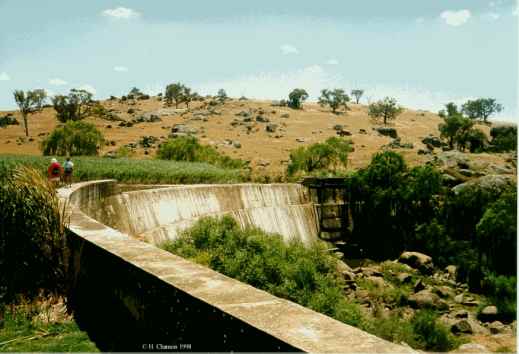
In high-velocity turbulent flows, air bubbles are entrained at the free surface. This process (self-aeration) is caused by the turbulent velocity fluctuations acting next to the free surfaces. The presence of air within the flow increases the bulk of the flow, modifies the momentum shear layers and enhances the air-water gas transfer. The project is based upon new experimental investigations using large-scale experiments : water jets discharging into the atmosphere, high-velocity open channel flows, hydraulic jumps and plunging water jets. The results enable a better understanding of the fluid mechanics of free-surface air-water flows (CHANSON 1997, Academic Press). Applications include some optimisation of hydraulic structure design, mixing devices in chemical plants, firefighting equipment.
More on Air-water flows ... Spillway aeration devices ...
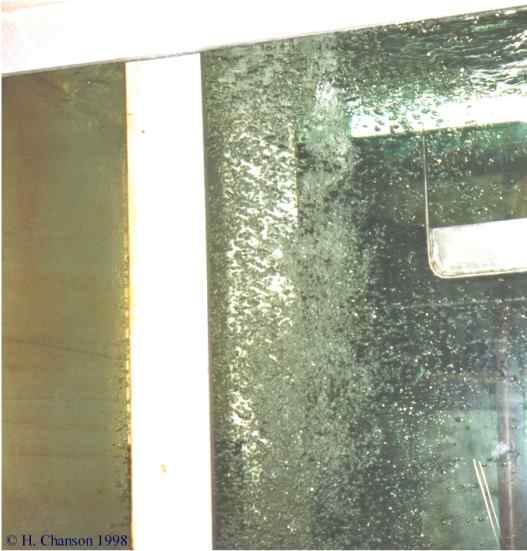 Air bubble entrainment by circular plunging jet, flow from
top to bottom (V = 3.3 m/s)
Air bubble entrainment by circular plunging jet, flow from
top to bottom (V = 3.3 m/s)
Estuarine processes are complicated phenomena that are in between traditional fluvial and coastal hydraulics. Present studies are focusing on turbulent mixing and turbulence characteristics in estuarine zone. A joint collaboration is underway with Japan to compare systematically the characteristics of shallow water bays and estuaries.
Coaztal engineering studies include the hydrodynamics of tidal bores, whirlpools and breaking waves.
Plunging breaking waves have a dominant role in the energy dissipation process. The breaking process is extremely energetic and associated with strong air bubble interactions. The energy radiation of long-period waves is a predominant source of energy in the offshore-onshore direction. The process is extremely important to understand coastal erosion and harbour protection. Two research collaborations are active with Taiwan and Japan. Some results showed that air entrainment at plunging breakers is similar to bubble entrainment by plunging liquid jets. Further 'free' long waves may be generated near the coastline by the water level rise associated with the air entrainment.
More on Tidal bores ... Whirlpools ... Subtropical estuary ....
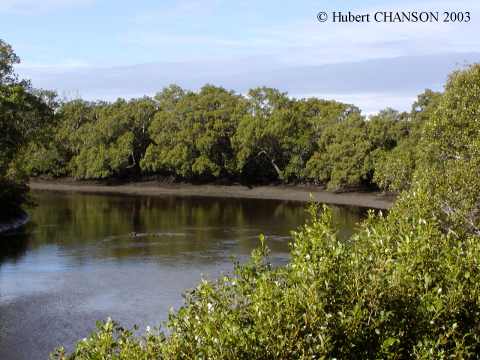
Aeration Technology and Water Quality Modelling
Most assessments of water quality in rivers and ocean are based on dissolved oxygen (DO) levels. Most dissolved oxygen is derived from the free surface aeration which occurs when air bubble clouds are entrained by breaking waves. For example, during storms in the ocean and during spillway releases at a dam. Air-water gas transfer across the bubble interface is predominant as the net surface area of thousands of entrained air bubbles is much greater than the area of the free-surface. New experimental investigations have been conducted to simulate different mechanisms of wave breaking and air bubble entrainment. The results enable a better understanding of the aeration mechanisms. The study is applied to water quality problems downstream of hydraulic structures, the greenhouse effect and ocean-atmosphere gas exchange processes.
More about Air entrainment on chutes spillways ...
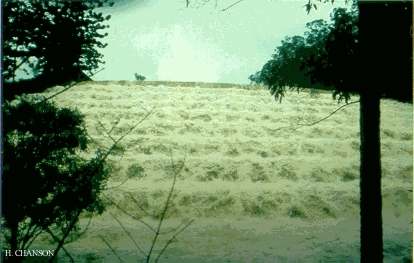 Gold Creek dam stepped spillway (Australia 1890)
Gold Creek dam stepped spillway (Australia 1890)
Environmental Management and Sediment Transport
A series of studies are conducted to improve soil and land conservation, and reservoir management. A study of reservoir siltation in South-East Australia has highlighted rapid sedimentation of several reservoirs (e.g. Moore Creek, Korrumbyn Creek, Quipolly No. 1 reservoirs). The investigation suggest that improper land management practices and unsuitable decisions have been the main reasons. The results have direct implications to the community in terms of dam safety and reduction of soil degradation. Another collaborative project deals with the use of wetland to treat sewage and storm waters. Wetlands may be used as an environmental tool in place of and in conjunction with treatment plant. A pilot study conducted at Logan treatment plant is most encouraging.
More on Extreme reservoir siltation ...
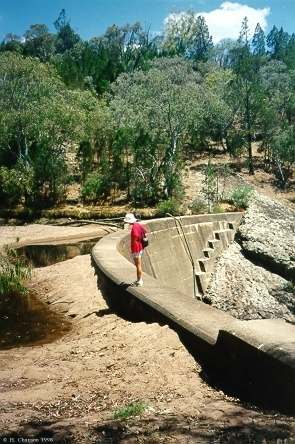
Engineering History and Heritage
Several studies are conducted in parallel to investigate the historical development of civil engineering and hydraulic structures. Current projects include the early developments of dams, reservoirs and water supply systems in Australia (from the early 1800s to 1950), the history of stepped cascades and chutes (from BC 1300 to today), the introduction of concrete in hydraulic structures during the 19th century. The results of the project bring new lights to present design techniques and trends. For example, for the design of stepped spillways, for the refurbishment of existing weirs and dams, with regards to reservoir siltation. One study is focused on the hydraulics of Roman water supply and aqueducts. An investigation of steep chutes and cascades along aqueducts has highlighted the presence of supercritical flows and hydraulic jumps. Further an unusual type of dissipation structures was used : the Roma dropshaft. Analytical and physical models of dropshaft operation are developed, and the study provides a better understanding of the aqueduct operation.
More about Rubber dams ... Steel dams ... History of arch dams ....
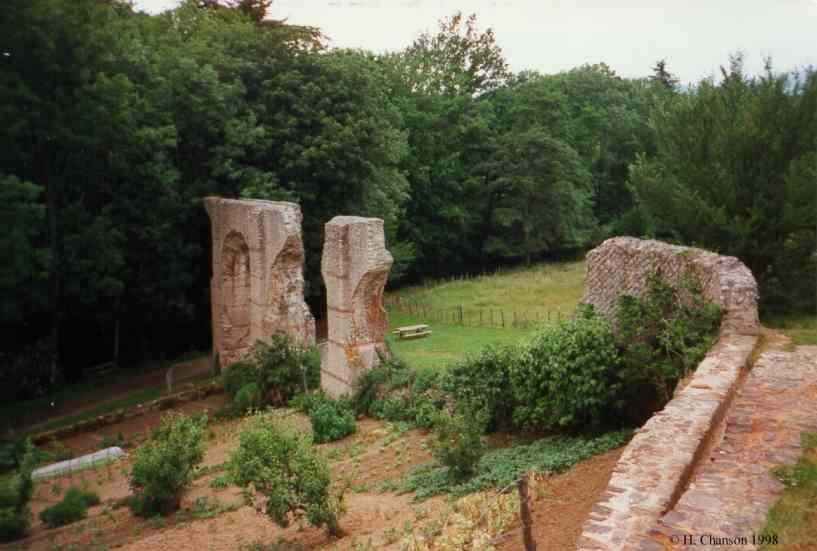 Gier aqueduct at Mornant (Lyon, France), June 1998
Gier aqueduct at Mornant (Lyon, France), June 1998
CHANSON, H. (2001). "The Hydraulics of
Stepped Chutes and Spillways." Balkema,
Lisse, The Netherlands (ISBN 90 5809 352 2). Order
form. Corrections
and
Updates
Spanish edition : "Hidraulica Del Flujo De Canales Abiertos", McGraw Hill Interamericana, División Universidad, Columbia (ISBN: 958-410-256-7).CHANSON, H. (1997). "Air Bubble Entrainment in Free-Surface Turbulent Shear Flows." Academic Press, London, UK, 401 pages (ISBN 0-12-168110-6).
Chinese edition : Hydrology Bureau of Yellow River Conservancy Committee, March 2003 (ISBN 7-80621-529-8). Download leaflet.
Hubert
CHANSON is aProfessor in Civil Engineering, Hydraulic Engineering
and Environmental Fluid Mechanics at the University
of Queensland, Australia. His research interests include design of
hydraulic structures, experimental investigations of two-phase flows,
applied hydrodynamics, hydraulic engineering, water quality modelling,
environmental fluid mechanics, estuarine processes and natural resources.
He has been an active consultant for both governmental agencies and
private organisations. His publication record includes over 1200
international refereed papers and his work was cited over 6,500 times
(WoS) to 22,500 times (Google
Scholar) since 1990. His h-index is 43 (WoS), 47 (Scopus) and 74 (Google
Scholar), and he is ranked among the 150 most cited researchers in
civil engineering in Shanghai’s
Global Ranking of Academics. Hubert Chanson is the author of twenty
books, including "Hydraulic Design
of Stepped Cascades, Channels, Weirs and Spillways" (Pergamon,
1995), "Air Bubble Entrainment in
Free-Surface Turbulent Shear Flows" (Academic
Press, 1997), "The Hydraulics
of Open Channel Flow: An Introduction" (Butterworth-Heinemann,
1st edition 1999, 2nd
editon 2004), "The Hydraulics of
Stepped Chutes and Spillways" (Balkema,
2001), "Environmental
Hydraulics of Open Channel Flows" (Butterworth-Heinemann,
2004), "Tidal
Bores, Aegir, Eagre, Mascaret, Pororoca: Theory And Observations" (World
Scientific, 2011), "Applied
Hydrodynamics:
an Introduction" (CRC
Press, 2014). He co-authored three further books "Fluid Mechanics
for Ecologists" (IPC Press, 2002), "Fluid Mechanics for Ecologists.
Student Edition" (IPC, 2006) and
"Fish Swimming in Turbulent Waters. Hydraulics Guidelines
to assist Upstream Fish Passage in Box Culverts" (CRC Press 2021). His textbook "The Hydraulics
of Open Channel Flows: An Introduction" has already been translated
into Spanish (McGraw-Hill
Interamericana) and Chinese (Hydrology Bureau of Yellow
River Conservancy Committee), and the second
edition was published in 2004. In 2003, the IAHR
presented him with the 13th Arthur Ippen Award
for outstanding achievements in hydraulic engineering. The American
Society of Civil Engineers, Environmental and Water Resources Institute
(ASCE-EWRI) presented him with the 2004 award for the Best Practice paper
in the Journal of Irrigation and Drainage Engineering ("Energy
Dissipation
and Air Entrainment in Stepped Storm Waterway" by Chanson and
Toombes 2002), the 2018 Honorable Mention Paper Award for "Minimum Specific
Energy and Transcritical Flow in Unsteady Open-Channel Flow" by
Castro-Orgaz and Chanson (2016) in the ASCE Journal of Irrigation and
Drainage Engineering, and the 2020 Outstanding Reviewer Award. The
Institution of Civil Engineers (UK) presented him the 2018 Baker Medal. In
2018, he was inducted a Fellow of the Australasian
Fluid Mechanics Society. Hubert Chanson edited further several books
: "Fluvial, Environmental and Coastal
Developments in Hydraulic Engineering" (Mossa, Yasuda & Chanson
2004, Balkema), "Hydraulics.
The
Next Wave" (Chanson & Macintosh 2004, Engineers
Australia), "Hydraulic
Structures:
a Challenge to Engineers and Researchers" (Matos & Chanson 2006,
The University of Queensland), "Experiences and
Challenges in Sewers: Measurements and Hydrodynamics" (Larrate &
Chanson 2008, The University of
Queensland), "Hydraulic
Structures:
Useful Water Harvesting Systems or Relics?" (Janssen & Chanson
2010, The University of Queensland),
"Balance
and Uncertainty: Water in a Changing World" (Valentine et al. 2011,
Engineers Australia), "Hydraulic
Structures and Society – Engineering Challenges and Extremes"
(Chanson and Toombes 2014, University
of Queensland), "Energy
Dissipation
in Hydraulic Structures" (Chanson 2015, IAHR
Monograph, CRC Press). He chaired the Organisation of the 34th
IAHR World Congress held in Brisbane, Australia between 26 June and
1 July 2011. He chaired the Scientific Committee of the 5th IAHR
International Symposium on Hydraulic Structures held in Brisbane in
June 2014. He co-chaired the Organisation of the 22nd Australasian Fluid
Mechanics Conference held as a hybrid format in Brisbane, Australia on
6-10 December 2020.
His Internet home page is http://www.uq.edu.au/~e2hchans.
He also developed a gallery of photographs website {http://www.uq.edu.au/~e2hchans/photo.html}
that received more than 2,000 hits per month since inception.
| Back to Prof. Chanson's Home Page |
|
|

